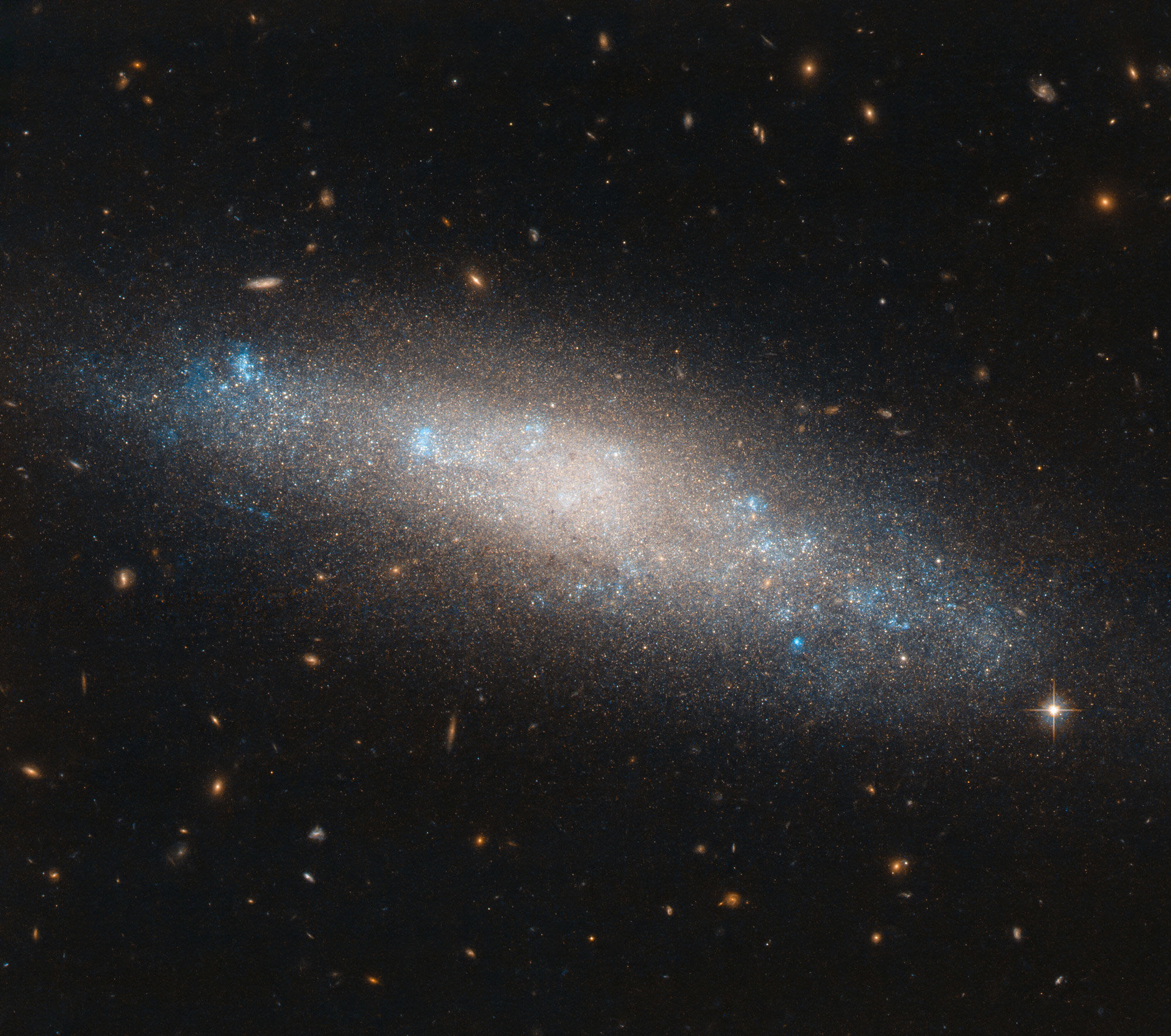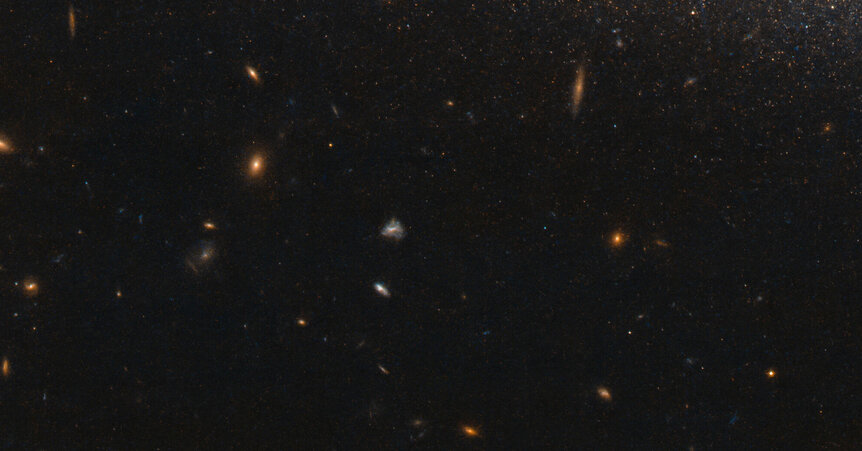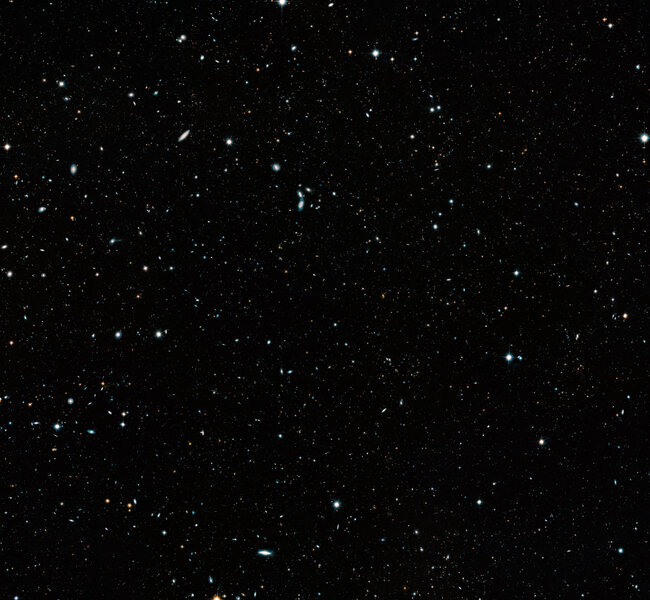Create a free profile to get unlimited access to exclusive videos, sweepstakes, and more!
NGC 4455: A nearby galaxy that's the stepping stone to the Universe

We are not alone in the Universe.
Our galaxy, I mean. The Milky Way is one of a couple of trillion galaxies in the observable Universe. Those galaxies are not evenly distributed, either: Some are by themselves in the local space around them, while others are in small groups of a few dozen galaxies, and still others are in huge clusters with hundreds or thousands of other galaxies. Even that's not the top of the scale, with clusters themselves clustering into superclusters.
We are in a small group we parochially call the Local Group. But we exist in the outer suburbs of a cluster of two thousand galaxies called the Virgo Cluster, the heart of which is about 60 million light years away in the constellation Virgo (hence the cluster's name).
We know quite a bit about the galaxies in the cluster, but we can also learn more from the galaxies around it, nearby but not in it. They're affected strongly by the cluster, depending on the cluster's mass and their distance from it, so by getting an accurate distance to these galaxies we can learn more about the cluster they live near. Some astronomers used the Hubble Space Telescope to take quick observations of a few dozen such Virgo-adjacent galaxies, hoping to get accurate distances to them by looking at some of the brightest stars in them. This in turn can be used to learn more about the gravitational influence of the Virgo Cluster on them.
One such galaxy is NGC 4455, an odd little beast in the constellation of Coma Berenices, just north of Virgo. I was drawn in by the image of it from Hubble, because it's as odd as it is lovely.
The loveliness of it is apparent, but I'll have to explain its oddity.
First, it's elongated, so you might be tempted to classify it as an elliptical galaxy, shaped like an American football. But the image has clues that's not the case.
We have to be careful here, though! This is not a three-color image, showing us the light in more or less natural color. It was taken using two filters, one that lets through red light and another that passes infrared light (this helps distinguish those bright stars needed to find the distance). So what you see as blue here is actually red light, and what is displayed as red is actually infrared.
Knowing that, we can see blue patches scattered throughout the galaxy that we know are actually red. That means they are very likely clouds of hydrogen gas, nebulae where stars are born. Elliptical galaxies don't usually have those, so that means this is more likely to be either a spiral or an irregular galaxy. I can see the patches tend to be in the outskirts of the galaxy, which you'd expect for a spiral (irregulars are, well, irregular, and tend to have gas clouds everywhere). I can also see a hint of dust, dark streamers in the galaxy, that suggest spiral structure.
In fact the galaxy is classified as a dwarf spiral — it's probably only 30,000 light years across at most, a fraction of the Milky Way's size — and may be what's called a Magellanic Spiral, with a single spiral arm winding around it. The prototype for this kind of galaxy is the Large Magellanic Cloud, a satellite of the Milky Way, which looks irregular at first glance but upon deeper inspection is a subtle spiral galaxy.
The distance to the galaxy is actually uncertain. You can use the redshift to get it, and from that I get that it’s about 28 million light years from us (this is close to a few sources I found online, including Wikipedia). But you have to be careful with nearby galaxies; the redshift/distance relation works best on distant galaxies, swept away from us by the expansion of the Universe. That gets bigger with distance, so nearby galaxies have a smaller redshift. If they happen to be physically moving in space, that can contribute a large fraction of their redshift, making it bigger (so the galaxy seems farther away) or smaller (making it look closer). Also, the Virgo Cluster has enough gravity that galaxies near it fall toward it, adding to the redshift we see for galaxies between us and it.
Another method, using a more complicated relationship between redshift and distance, gets a distance of more like 42 million light years (close to what’s quoted on the Hubble page). That's a big discrepancy!
The "bright star" method I mentioned earlier, technically called the tip of the red giant branch distance method, looks for stars like the Sun at the ends of their lives. When observed in the near infrared they all tend to have the same luminosity, so their distance can be found simply by measuring how bright they appear. That’s why NGC 4455 was observed by Hubble in the first place! The astronomers found the distance to the galaxy to be about 27 million light years this way. This more accurate measurement will help astronomers understand the physical properties of the Virgo Cluster, which in turn will help then understand clusters in general, including ones across the observable Universe.
One more thing I want to mention. The constellation of Coma Berenices is located in the direction of galactic north; in other words, we're looking straight up, out of the plane of our flat galaxy. Fewer stars are in that direction, and you can see this in the image! I only see one bright star (at the lower right; the diffraction spikes give it away) and almost no others.
That means that everything else you see in that image is a distant background galaxy! And look at them; there are hundreds. Each one of those is a mighty city of stars, billions or hundreds of billions strong, located billions of light years away, far across the Universe. Mind you, this is a 2,000 second total exposure, so only about 40 minutes! Imagine what Hubble would see if you spent hundreds of hours looking at just one spot.
Or don't imagine it: Look for yourself. Several programs by Hubble have done exactly this. This shot of NGC 4455 tells us about our local Universe, but those Deep Fields tell us about the Universe as a whole.
A hundred years ago astronomers were finally understanding, after decades of debate, that the Milky Way was not the whole Universe, and those weird spiral nebulae were actually galaxies themselves. And in that relatively short time, look how far we've come.
Bigger and better telescopes are coming, too. When they replicate these phenomenally deep observations, what will they see?
It gives me chills just to think about.

















